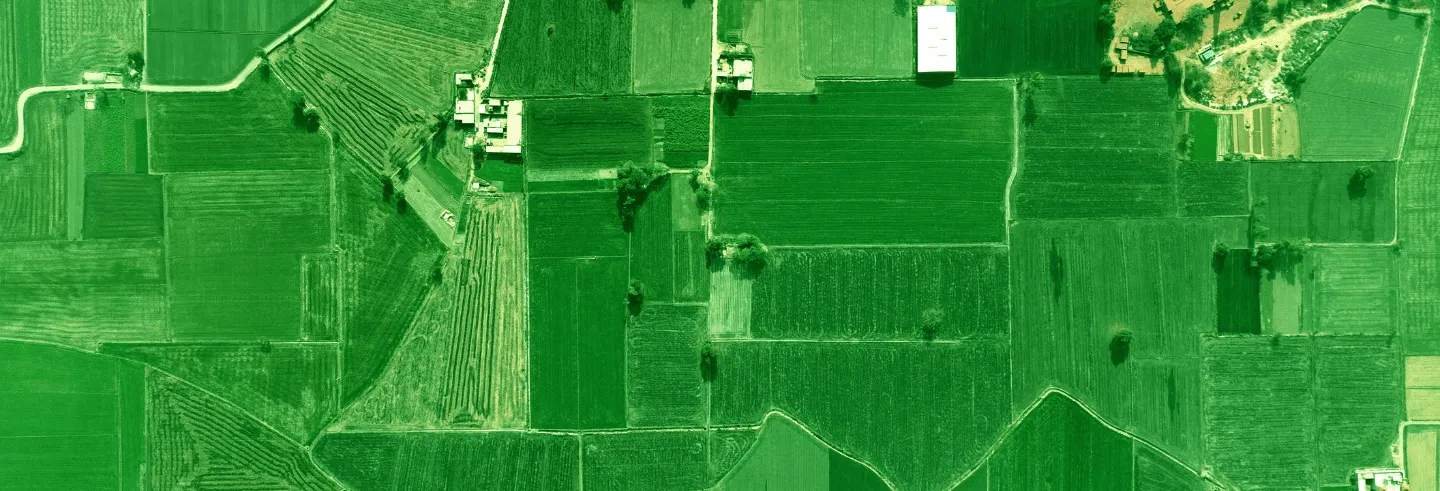Punjab’s new Land Pooling Policy, 2025, projected as a bold and voluntary alternative to traditional land acquisition, marks the state’s largest urban land initiative to date. With more than 40,000 acres across 158 villages designated for urban expansion, the state government claims that this model will facilitate planned development by empowering landowners to participate in the urbanisation process.
Unlike conventional land acquisition, where the state buys land in exchange for monetary compensation, land pooling involves the voluntary contribution of land by owners to a development authority. A portion of the reconstituted and serviced land is then returned to the original owners, who are promised improved infrastructure and potential future gains. This model has been celebrated by policymakers as a progressive approach that integrates landowners into the process of urbanisation. However, beneath the surface, the policy raises critical questions about exclusion, inequality, and the deepening of caste-based landlessness in Punjab.
These concerns have been amplified by the Punjab and Haryana High Court. Hearing a petition by a group of farmers from the designated pooling zones, stayed the implementation of the state’s land pooling policy. The court cited serious flaws in the framework, noting its “policy blindness towards the livelihood rights of non-landowning rural residents". While not striking down the policy outright, the bench directed the state to submit, within three months, a supplementary plan outlining rehabilitation, skill training, and housing provisions for landless labourers affected by pooling projects. This order is significant—it acknowledges the structural exclusion embedded in the policy while putting the onus on the government to address it, potentially setting a precedent for more inclusive planning.
(UPDATE: After this essay was published, the Punjab government on 11 August withdrew the policy.)
Landless at the Margins
Punjab ministers have often described the state’s land pooling policy as one of the most progressive and voluntary in the country. However, a closer examination reveals significant gaps in its framework, especially its exclusive focus on landowners and its long-term socio-economic implications. According to Chief Minister Bhagwant Mann, the policy is designed to curb the spread of illegal colonies and prevent unplanned urban expansion by making land owners stakeholders in development. Finance Minister Harpal Singh Cheema echoed this, stating that the policy respects the rights and aspirations of land owners and offers better returns, services, and future connectivity.
Ironically, what is notably absent from all official statements is Punjab’s landless populations —agricultural labourers, tenants, and informal workers. Their exclusion reflects not just a policy gap, but also a deeper erasure from the very imagination of policymakers. While the policy promises higher returns to landowners, it fails to address the needs of those who depend on these lands for their livelihoods.
As reported by Kanchan Vasdev in July 2025, in cities like Mohali, where the policy has already been implemented, land prices have surged—from around Rs. 1.5 crore per acre to Rs. 9 crore. This spike is often cited as evidence of the policy’s success. Yet, a critical question remains—do rising land prices compensate for the loss of livelihoods and the deepening social inequalities this model risks perpetuating? Should urban development be measured only in monetary terms? What happens when large sections of the rural poor, especially the landless and marginal farmers, are erased from the policy discourse altogether?
Do rising land prices compensate for the loss of livelihoods and the deepening social inequalities this model risks perpetuating? Should urban development be measured only in monetary terms?
For a more equitable and effective approach to urban development in Punjab, the following questions must be asked—what is the state’s approach to landless populations within the pooling areas? How does the policy plan to protect or compensate those excluded from land ownership? Can a truly inclusive urban development policy emerge if it systematically ignores the most vulnerable? What happens when large sections of the population, particularly the landless, are systematically excluded?
Structural Exclusion
These exclusions fall hardest on Dalit communities. Dalits in Punjab are overwhelmingly landless—around 94% of them do not own cultivable land. However, the benefits under the land pooling policy—such as developed plots and compensation—are reserved exclusively for legal landowners. This structural exclusion means that Dalits will be systematically denied any share in the gains from land value appreciation or urban development (Menon 2022; Sathe 2015).
Land pooling and urban expansion typically convert agricultural land—where landless Dalits often work as wage labourers—into urban and commercial use (Gill 2006). This transformation frequently leads to large-scale job losses among these communities. Without targeted rehabilitation and alternative livelihood provisions, Dalits risk falling into deeper poverty and becoming dependent on informal and insecure urban work (Gautam 2021).
While Dalits have secured limited land rights through past land reform and redistribution efforts, land pooling policies risk becoming a vehicle for elite capture, co-option, and even dispossession.
By rewarding landowners and ignoring the landless, this policy is likely to widen the economic gap between dominant castes and historically marginalised castes, particularly Dalits. Evidence from land pooling practices in states like Andhra Pradesh and Gujarat, as well as land acquisitions elsewhere, shows that these policies often intensify existing caste-based agrarian inequalities. Dominant castes tend to consolidate wealth and power, while Dalits are further excluded and disempowered (Upadhya 2023; Gautam 2025).
While Dalits have secured limited land rights through past land reform and redistribution efforts, land pooling policies risk becoming a vehicle for elite capture, co-option, and even dispossession, reversing the earlier gains made in the name of social justice. Studies suggest that urban development projects in India often reinforce residential segregation along caste lines, with Dalits pushed to city peripheries or relegated to informal settlements lacking basic services. The absence of inclusive planning further entrenches caste-based spatial hierarchies and social segregation in newly developed urban areas, perpetuating patterns of discrimination and exclusion (Gautam 2024).
Studies have also shown that villages or neighbourhoods with a high Dalit population are less likely to receive public services or fair implementation of development schemes, and fair compensation for land—even when Dalits have some level of political representation. The risk is that, in practice, the land pooling policy will bypass Dalit communities or fail to address their specific needs, as has been observed in other state-led development programmes (Aklin et al. 2021).
Inclusive Urbanisation
Punjab’s urban transformation cannot be built on the erasure of its most vulnerable. A more equitable development model must begin by recognising the landless as stakeholders in the process—not as invisible victims but as citizens with rights and entitlements. The government must address various critical gaps in the current land pooling policy.
First, it must incorporate the landless by introducing meaningful rehabilitation and livelihood support mechanisms for agricultural labourers and tenants, drawing from the safeguards provided in the Right to Fair Compensation and Transparency in Land Acquisition, Rehabilitation and Resettlement Act, 2013. This includes requiring all new urban development and land pooling projects to allocate a fixed percentage of land or housing units to all affected domiciled landless labourers. In addition, the policy must ensure access to low-income housing for the urban poor, particularly those often pushed to the margins by development.
Because development authorities often face fiscal constraints, it has become financially unviable to depend solely on land acquisition for urban development. As a result, authorities are turning to alternative approaches, such as land pooling.
Second, protecting agricultural land should be a priority. Urban expansion must focus on brownfield sites or non-arable land to preserve Punjab’s food and livelihood security. Third, transparency must be significantly enhanced through the public disclosure of data on displacement, socio-economic impacts, and project outcomes. This would ensure greater accountability.
Retreat from Rights-based Development
There are several important questions that need to be addressed—not just in the case of Punjab’s land pooling policy, but more broadly why different states are creating their own and pooling policies instead of implementing the Land Acquisition, Rehabilitation and Resettlement Act of 2013. States often see this Act as more expensive and time-consuming, primarily because it mandates detailed processes such as Social Impact Assessments (SIAs) and Environmental Impact Assessments (EIAs).
In addition, the 2013 Act greatly increased the compensation for acquired land. Compensation can now be up to twice the market value in urban areas and up to four times the market value in rural areas. Because development authorities often face fiscal constraints, it has become financially unviable to depend solely on land acquisition for urban development. As a result, authorities are turning to alternative approaches, such as land pooling. This shift also reduces the likelihood of litigation related to land acquisition.
These criticisms reflect the short-sightedness of state governments and their failure to consider long-term implications and the need for inclusive development. Due to this, what we are witnessing is the growing trend of state entrepreneurship—states taking on the role of urban entrepreneurs, prioritising rapid monetisation and real estate-driven development agendas. For this, they use institutional innovations in land development and planning such as land pooling policies.
As it stands, Punjab’s land pooling policy risks deepening inequality and accelerating both social and ecological degradation under the guise of development.
This trend shows how the state is retreating from rights-based development towards profit-oriented development. In this model, planning authorities are increasingly aligned with real estate interests, and public accountability is weakened. This calls for an urgent national-level debate on the relevance, implementation, and circumvention of the Land Acquisition, Rehabilitation and Resettlement Act, 2013.
Focus on the Marginalised
The Punjab government must shift its development strategy from land monetisation to employment generation and sustainable urban planning. Landless and marginal farmers are often the most vulnerable when they lose access to land. To protect their livelihoods, they should receive full entitlements, including plots of land, shops or commercial spaces, and employment-linked support.
As it stands, Punjab’s land pooling policy risks deepening inequality and accelerating both social and ecological degradation under the guise of development. It appears that development authorities now serve more as facilitators for real estate developers rather than focusing on genuine development. There is also a pressing need for institutional reforms in urban development bodies, which are often plagued by corruption at all levels. Unless the state addresses the needs of the most vulnerable and embraces a truly inclusive and sustainable vision, the policy will remain one that benefits a few while marginalising the many.
Ajay Kumar Gautam is Assistant Professor at the Kautilya School of Public Policy, Hyderabad.









